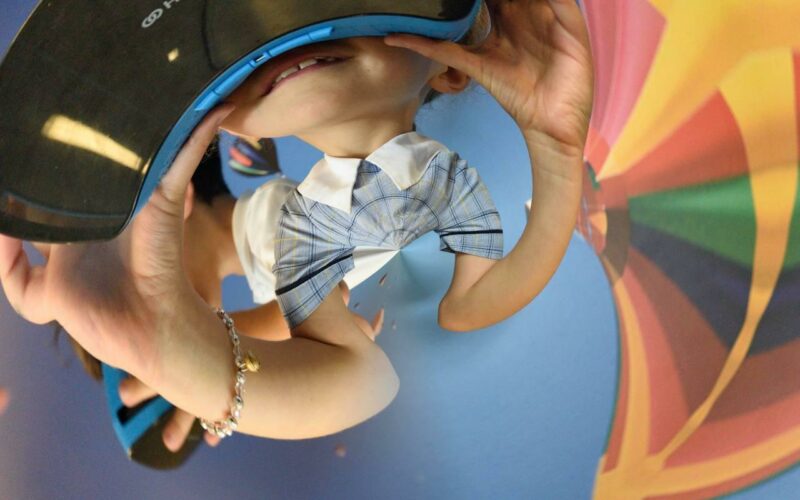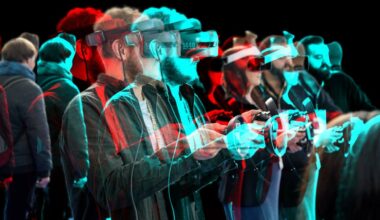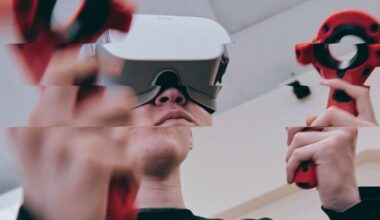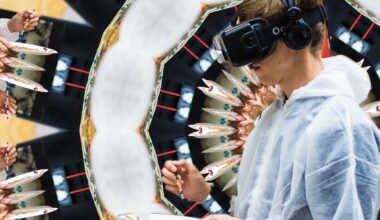Almost over a 100 years ago, virtual reality was nothing more than a fiction of someone’s imagination. Back then, it may have seemed like a futuristic concept that could only exist in films and books.
But now we are in the year 2021 and virtual reality is a part of our life. It’s something that really exists in the world and we can experience it if we want.
So what does that tell you? It speaks in volumes that almost all human inventions were once nothing more than a crazy idea, something that seemed impossible or unreal.
Today I want to discuss the crazy new concepts and technologies that exist in virtual reality and how these ideas and concepts might shape the future.
So let’s buckle up and dive deep into the world of VR!
History Behind the Creation of Virtual Reality
As I already mentioned, what we know today as virtual reality was once merely a concept created by someone who believed in the future of technology.
But, this sentence gives you only one tiny portion of the whole story behind the creation of VR. In fact, we can divide the whole history into pieces.
Let’s take a look at all of the concepts of VR that were in the past, which also paved the way for VR to be a new reality.
A Book Published in 1935
The first-ever emergence of virtual reality technology as we know it today happened back in 1935. Stanley Weinbaum published a fictional story called “Pygmalion’s Spectacles.”

In this book, the main character meets a professor who was able to invent a pair of goggles that allowed him to watch a movie using all of his senses, including smell, taste, sound, sight, and touch. This was one of the first known mentions of VR technology in the fictional world.
Virtual Reality In The 50s and 60s
During the mid-20th century, virtual reality slipped out of fantasy novels and slithered into the real world. In 1957, a man who is konwn as Morton Heilig created the first-ever VR multimedia device.
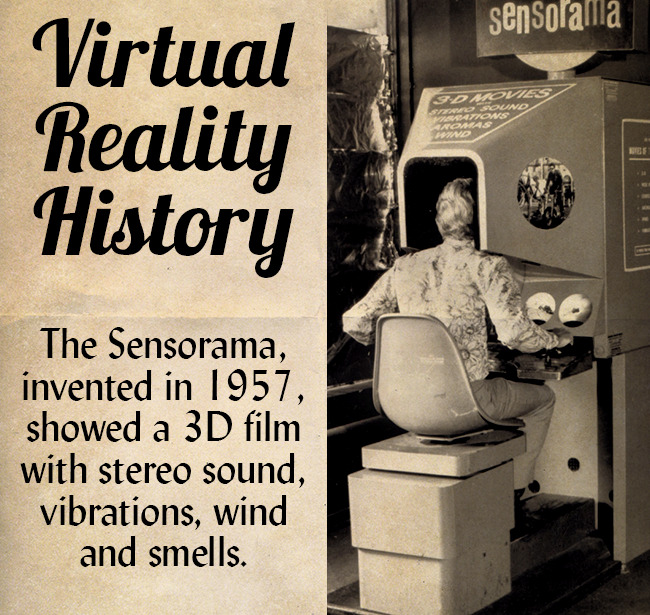
Heiling, who was a cinematographer, called his invention Sensorama. It was basically a theatre cabinet multimedia device that can offer viewers a more interactive film experience.
Eleven years later, Ivan Sutherland, a Harvard professor and computer scientist, come up with the first-ever head-mounted VR/AR display that they call ‘The Sword of Damocles.’
The Creation of the Term Virtual Reality
In the 80s, the VR space saw some of its greatest advances and also got its official name.
Around1986, the Visually Coupled Airborne Systems Simulator came and it became the foundation on which one of the first-ever 3D systems were created.
When 1987 arrived, John Lainer, a computer scientist, researcher, and artist, came up with the name “virtual reality”. He started the Visual Programming Lab (VPL) and it became one of the first companies to develop a range of VR gear. It also became the first company to sell VR goggles.
The VR Development Of The 90s and 2000s
The 90s and 2000s witnessed the concept of virtual reality turn into something tangible. In the year 1990, the Virtuality Group released a couple of games and arcade machines that brought VR to the masses.
During 1995, Nintendo Boy launched the first-ever portable console capable of displaying 3D graphics.
In the year 2000, a movie named The Matrix popularized the idea of virtual reality even more among the masses. However, the real deal came through when, in 2007, we saw the possible and practical uses of 3D, thanks to Google’s Street View software. This software mapped cities all over the world and displayed them in a 3 dimensional way on the Internet.
The Boom Of Virtual Reality Technology
In the last few years, we saw real adaptations and advancements occur in the virtual reality space. This is when the tech giants started to concentrate on this segment of the market and managed to produce tons of useful products that helped develop the field.
Nowadays, almost every movie you go to watch in the theatres is a 3D movie. Along with this, VR gaming is also available to us in the comfort of our home, thanks to Playstation.
Even though we’re achieving a lot in the last 20 years, there is still a lot of advancement that we can find in the field of virtual reality. Let’s talk about several concepts and ideas regarding VR that will soon be around the corner.
5 Future Concepts That Will Change VR
Ultra-Thin Headsets
Design is often neglected, but it is a key part of developing a product that stands out from the crowd. Just take a look at Apple and every type of device they make. What VR is lacking right now is goggles that are stylish, comfortable to wear, and don’t take up a lot of space.
Just imagine, if VR glasses looked like regular goggles. They would be much more popular than they are right now and a lot of people will go ahead with them regardless of its price.
New Networking Solutions
A more widespread usage of 5G networks will be very useful to the development of the virtual reality space. By using this high-speed network, the experience of VR will be 20 times faster than what it is now, according to leading science and technology portals.
Cloud computing will also play a huge part in this process and make our lives even smoother. Basically, the idea is to be able to move the graphic card and the chip on a cloud and connect them wirelessly over 5G, thus eliminating the need to use a computer, lowering the price for running VR.
Eye-Tracking
Eye-tracking is yet another innovation that can take VR to the next level. This technology can help in increasing the quality of the imagery, by taking advantage of the fact that the human eye can usually see only one thing in high definition. Everything else can be seen in significantly lower resolution, saving power, improving the quality of the experience, and increasing the field of view.
Mind Control
Okay, I agree that this is starting to get a little freaky but hear me out. If 100 years ago, a man had talked about traveling to the moon, he would have been deemed crazy. The earth used to be flat, but then suddenly it turned out to be more leaning towards the spherical spectrum, so Mind control is indeed possible.
A company called Neurable has recently been trying to use our minds for controlling the virtual world. The testing is done by tracking brain waves in an attempt to provide telekinetic control over machines.
Besides sounding really cool, this technology does have its practical benefits. Our brains are a lot faster and easier to use than controllers. We can potentially use our brain to use and command the VR realm. This will reduce latency and make the VR experience seamless.
However, no matter how incredible it sounds, this technology still has a long way to go.
Full Immersion
I’m sure you know the movie “Ready Player One.” Well, full immersion is more or less the same thing, being able to just put on your VR suit and get transferred to another dimension altogether, where you’re a different person, doing exciting things.
Many companies, including Tesla have started experimenting with creating a full-body virtual reality suit that is able to help you explore the virtual world with all your senses. Elon Musk’s current version of a VR suit uses haptic feedback which allows the user to feel a touch, muscle movements, and many other emotions that make gaming even more immersive.
The prospect of being able to fully dive into the gameplay is still some years away from us. However, the progress that has been made in the past few decades shows that it’s not impossible.
The Bottom Line
Virtual reality started out as a fantasy concept. Later on, it became something real and tangible, thanks to the incredible power of the human mind. Even though we’ve achieved a lot with the development of this technology, there are still steps to be taken to make it better. But the time is not far when VR becomes the new normal for us.
Keep exploring!
